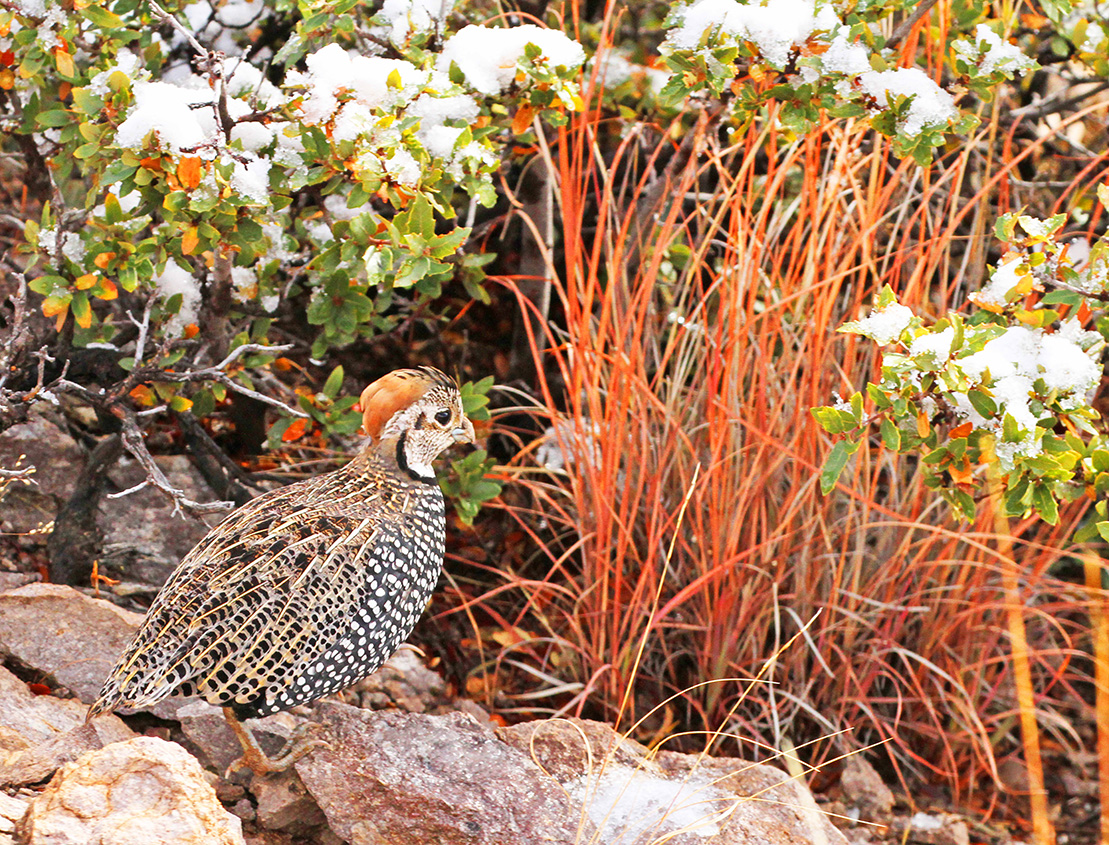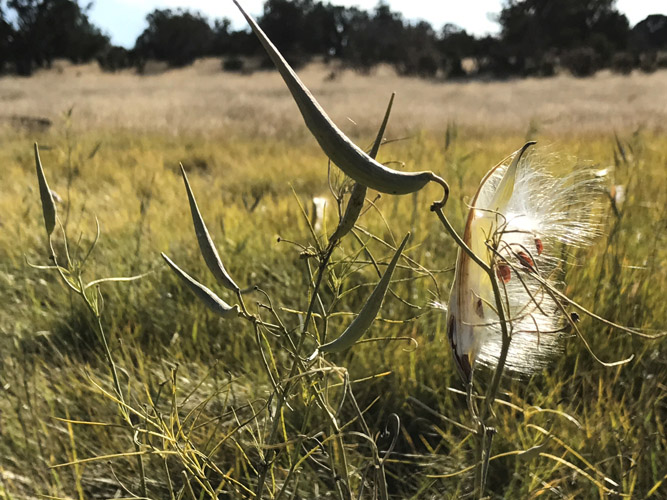
The photo evidence is dramatic: looking down a long fence line, one side is lush with tall, thick, green grass, the other has short clumps of grass and a lot of exposed bare ground. Same rainfall, same sunlight on both sides of the fence. What made the difference between the two properties?
The R Bar R or Ranney Ranch as it’s commonly called [now the Ramos Ranch], situated in high mesa country near Corona, is living proof of the power of managed grazing practices to restore drought-weary grasslands in central New Mexico. The ranch, which was passed on to siblings Nancy, George, Ed and David Ranney, their spouses and ten grandchildren in 2002 when their father, George Ranney, died, made a mighty leap in improved soil and grasses when the family shifted to what Nancy Ranney refers to as rotational grazing, also known by more colorful names such as “poop and stomp,” holistic management, regenerative high-density grazing, and adaptive multi-paddock grazing (AMP).
“In 2003, we combined our 18 herds into one and began to rotate pastures,” Nancy said. “The results have been stunning. During the drought years – 2010, 2011 and 2012 – we did okay. We came through during those tough years as a result of the improved condition of the land.”
Nancy is convinced that managed grazing is also key to healthy habitat for wildlife.
“It is increasingly clear that the health of our soil and grasslands, which is fundamental to successful rangeland cattle operations, is also key to sustainable natural communities of mammals, insects and grassland birds. It is under-recognized that grazing animals, well-managed, are vital to the health of grassland ecosystems. Their hooves aerate the soil and increase water infiltration, their manure fertilizes the soil, their grazing stimulates the growth of grasses. Methane and soil carbon generated by planned grazing are part of a healthy cycle of bacterial and fungal soil enrichment.
“My inspiration has been the stunning improvement in grassland biodiversity over the 18 years we have managed our ranch in this manner. As indicator, our native grassland species (without any reseeding, artificial fertilizer or irrigation) have increased from five in 2003 to over 45 now. We have also observed increased numbers of species of soil microorganisms, insects, butterflies, bats and grassland birds. It has been a joy to bring students, land managers, native plant enthusiasts and birders to the ranch and observe their enthusiasm.”
Audubon agrees. A crowning recognition of the family’s grasslands success story was to be selected in 2016 as the New Mexico pilot for the Audubon Conservation Ranch Program – a rigorous certification program designed to promote regenerative grassland management practices that protect critical habitat for grassland birds whose numbers are on a scary trajectory of decline in North America due to rapidly vanishing grassland habitat. The program aims to educate consumers and provide a new market for ranchers to sell what Audubon calls “bird-friendly” grassfed beef, with the goal of revitalizing both grassland ecosystems and the local communities which depend on them.
(Montezuma Quail photo courtesy of Mark Watson)
The Ranneys were relatively early to recognize the benefits of marketing grass-fed beef back in 2003, and the Audubon certification was a natural extension of what the family had already been doing for more than a decade. “It was all about educating the consumer,” Nancy said, “and there are a lot of birders in the U.S,” she added. “When I would give them the basic ‘birds and bees’ speech about using grazing as a tool to restore the grasslands, they got it [the idea] in two minutes!”
Audubon was particularly impressd with the biodiversity and habitat they found on the ranch. Nancy tells how each spring for three years Audubon sent ornithologists to stake out transects on the ranch and to observe each for 30 minutes at dawn for three weeks. “They were amazed what they found through sight and sound,” Nancy exclaimed. “Montezuma Quail, at the northern extent of their range, which are only seen on very well managed and healthy rangeland, and the scaled quail, struggling to maintain their numbers, but thriving on the ranch . . .” just to name a few.
“. . . It’s not just the birds that benefit
It’s not just the birds that benefit. The Corona area is recognized as prime mule deer country. “This past year, twenty elk have come down from Gallinas Mountains, probably the result of increasing drought,” Nancy speculated. Mule deer need healthy grasslands that include a mix of desirable shrubs upon which they browse. Nancy recalled that during the late 1990s/early 2000s, the deer suffered badly from chronic wasting disease. “It took out a lot of animals,” she said. “The population is coming back now, but it is still not back to where it was.”
Pay it forward
This year, after 18 years of what could easily be called “restoration ranching,” the Ranneys decided it was time to sell. It was a difficult decision, the ranch being a generational family affair and a labor of love watching the land respond so well to their management. When the decision was finally made, the family wanted to first protect a large portion of their rangeland with a conservation easement. Nancy contacted NMLC and then the process began – on an ambitious timetable to coincide with the property’s sale within months, to brothers Heriberto and Jaime Ramos of Houston and Midland, TX, who have hunted on the Ranney Ranch for a number of years and want to enjoy the property for years to come.
Keeping these larger legacy ranches intact and not subdivided into parcels too small to be economically viable as agriculturally productive lands is critical not only to the health of our rural communities but also to maintaining connectivity for wildlife throughout the Southwest. Conservation easements are an effective way to prevent this fragmentation because they’re permanent, and once in place, that land can’t be subdivided even if or when the ranch changes hands later on. The 9,948-acre easement on the Ranney’s ranch covers the north half of the property, “the wilder part,” as Nancy describes it, mostly mesa and canyon country – important wildlifehabitat in the area. Nancy and her family are thrilled to learn that the new owners plan to run cattle and continue to work with long-time ranch manager, Melvin Johnson, to maintain the health of the land. Melvin and his wife Esther have lived on the ranch for 36 years and raised their children there.
Despite the Ranney’s departure, the impact the family’s stewardship has had on the land, on wildlife and on New Mexico’s ranching community will hopefully live on well past their tenure. #
Longhood Milkweed now flourishes on the ranch.
(Reprinted here from the NMLC Fall /Winter 2020 Magazine. Copyright 20120)


